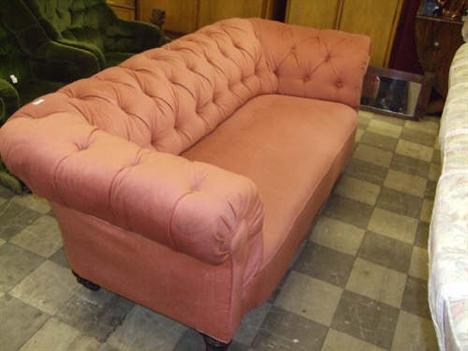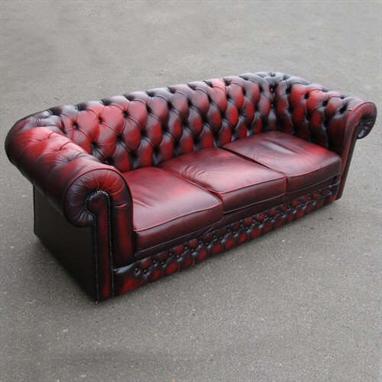A Splendid 19th Century American Mahogany Sofa freshly re-upholstered in a golden-yellow lattice design fabric edged in braid. The deep-buttoned back beneath a lavishly scrolling show frame with a domed convex-moulded cresting rail raised up to the centre and curved under at each end to meet a turned roundel. The long sprung seat above a flame figured frieze swept up at either side and forming bifurcated scrolls encircling cylindrical end cushions. Standing on scroll feet 90½ ins (230 cms) in length.
We found 58284 price guide item(s) matching your search
There are 58284 lots that match your search criteria. Subscribe now to get instant access to the full price guide service.
Click here to subscribe- List
- Grid
-
58284 item(s)/page
A Fine Quality Yew Wood Sofa Table. The well figured top having a reeded edge above two cock-beaded drawers with ivory diamond shaped escutcheons and flanked by carved flower-heads. The rectangular end supports having intricately carved brackets with leaves raised on the trestles and splayed feet profusely carved with foliage. 28¼ ins (72 cms) in height, 49 ins x 27½ ins (125 cms x 70 cms).
A late 19th century mahogany sofa table, the oblong top with string boxwood inlay, flanked by twin hinged leaves, above two frieze drawers opposed by faux drawers, set on four ring turned columns and outswept supports with brass paw cappings and castors, joined by two turned stretchers, 56in (142cm) wide.
A 19th century Dutch walnut, chequer strung and floral marquetry sofa table, the rectangular top with central flower filled vase, each drop leaf decorated with a vignette of a female cellist, above a pair of opposing frieze drawers on faceted tapering supports and scrolling trestle base united by a baluster turned stretcher, 77cm wide, 76cm high, 56cm deep (151cm wide, flaps up), Provenance: The Estate of Sir George Washington Baxter Bt and thence by direct descent
A 19th century mahogany sofa table, the rounded rectangular top with reeded edge above a pair of cockbeaded frieze drawers with star shaped pull handles opposed by simulated drawers, on square section end standards united by an arched stretcher and reeded dual splay feet ending in brass caps and castors, 112cm wide (158cm flaps up), 74cm high, 76cm deep
Philip Richard Morris (British, 1836-1902), Portrait of Mr Austin; and Portrait of Mrs Austin, oil on canvas, 74 x 62cm (28.86 x 24.18in), a pair (2). The family writes: "The portraits are of Mr and Mrs Austin, indigo planters, who married in Calcutta Cathedral in 1848; in those days brides were expected to curtsey to their new mother-in-law as they processed up the church on the arm of their groom. This lady refused to do so, it being beneath her dignity as she was a 'cousin of the Earl and Countess of Wemyss'. They had various children, but India was a graveyard for babies and children in those days, and they were sent home with governesses or nurses to be brought up in England. They would be sent across land, with a cow to give milk for the children - I expect quite a cavalcade, a large group of them would go at a time, not just one or two - and then the cow would go with them on the ship home. When they reached England, it would be given to the captain in part payment for the journey. Indigo planting was very remunerative, and Mr Austin became extremely wealthy. The portraits were painted by Philip Morris in London; he lived in a very poor garret with his young wife, trying to make a living, and they were eating cheap cuts of meat, chops or cutlets, when they heard the Austins' carriage rattling up to their door. The artist's wife hurriedly pushed the plates under the sofa, and went to let the important visitors in. Mrs Austin had her little dog with her, and to the intense shame of the Morrises and the amusement of the Austins, it burrowed under the settee and came out chewing the bones. This story has been handed down the generations since"
-
58284 item(s)/page











































